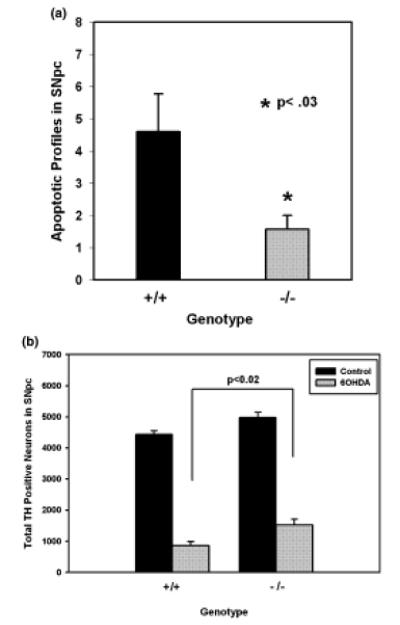Fig. 5.

The CHOP null mutation protects from apoptotic cell death in the adult 6OHDA model. (a) Wild-type (n = 5) and CHOP homozygous null (n = 6) adult mice were injected into the striatum with 6OHDA. They were killed 6 days later for TH immunostaining of the SN and counting of apoptotic profiles within the SNpc. The CHOP null animals demonstrated a 65% reduction in the level of apoptosis (p < 0.03, t-test). (b) Wild-type (n = 7) and CHOP null (n = 8) adult mice were injected with 6OHDA and killed 28 days later for TH immunostaining of serial sections for stereologic determination of the number of surviving dopaminergic neurons. In both genotypes, the 6OHDA injection led to a significant reduction in the number of SN dopamine neurons (p < 0.001, anova; Tukey post-hoc). In the CHOP null animals, there was a 79% increase in the number of surviving neurons (p < 0.02, Tukey post hoc). Nevertheless, the absolute magnitude of preservation of neurons (31%) was less than anticipated, based on a much greater level of suppression of death in the acute phase.
